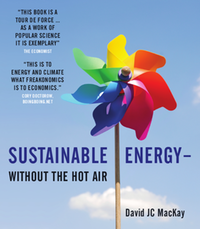Electric cars have some characteristics that enable them to make a valuable contribution to our transport needs:
Highly energy efficient, also in local trafic.
Overall energy use is reduced, losses in electricity generation included.
This lowers CO2 production and other pollution, particularly in cities.
Electricity can be generated from many different sources.
Many countries have an established electrical infrastructure.
As the purely electric vehicle does not burn any fuel, it does not pollute the air with combustion products where it is driven. On top of that a well designed electric vehicle can be so efficient in energy use, that even if electricity generation and distribution losses are included, it will use less primary energy than a conventional vehicle. It has a very high “well to wheel” efficiency. Electricity can be generated in many ways, rendering the energy supply system for transport highly flexible. Critics are often led by data taken from prototypes and test vehicles or other less developed cars. Yet if the future of new technology is to be assessed correctly, it is essential that a true and actual state of the art is taken as a starting position. For defining this “state of the art” I like using energy efficiency and range data the Tesla Roadster and the Tesla Model S achieve. 2500 Tesla Roadsters have been delivered to customers in 31 countries †and more than 50 million real world kilometres†provide by now a very solid base for estimates relating to the points raised above.
